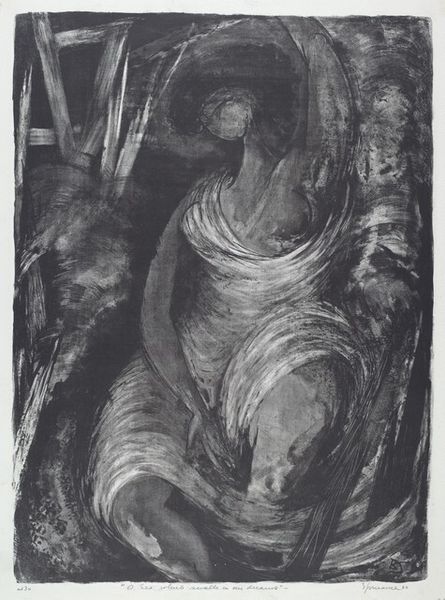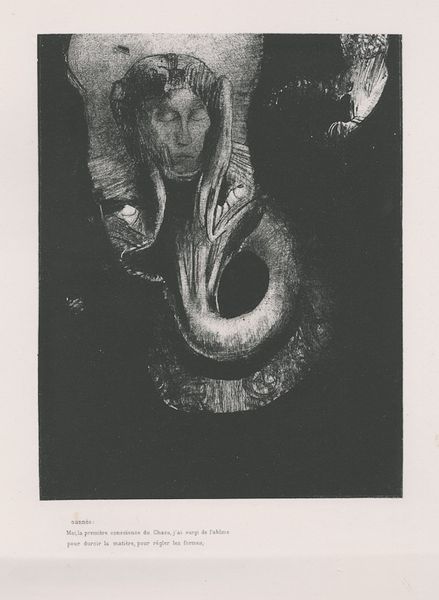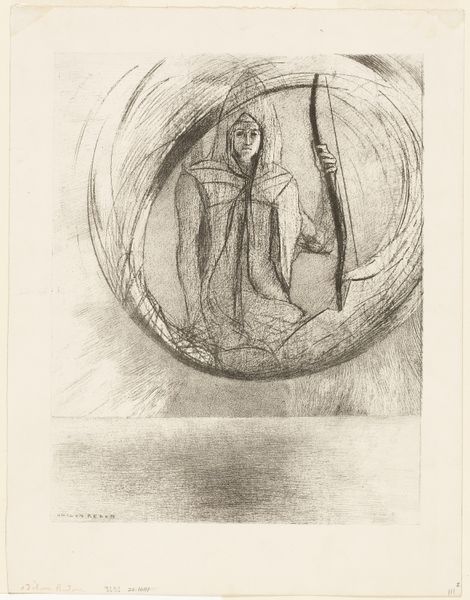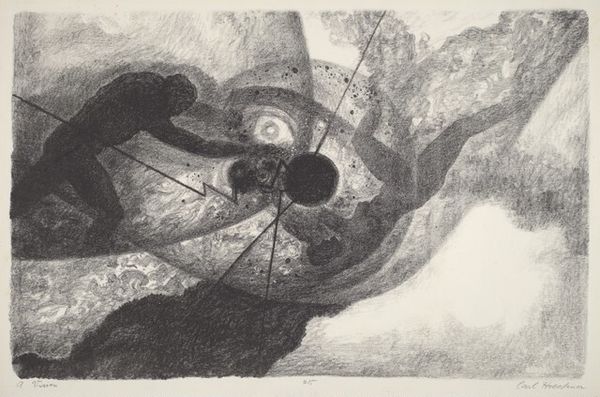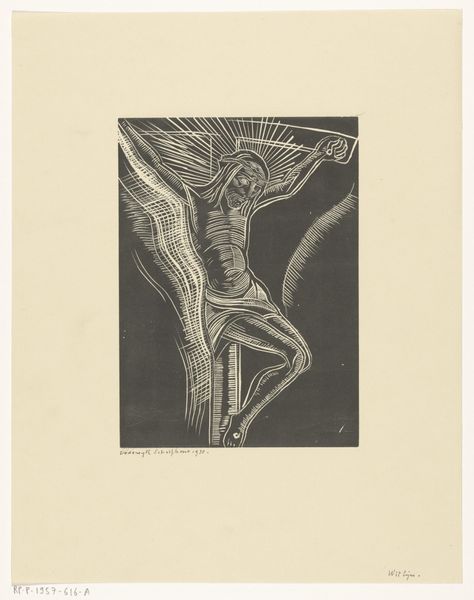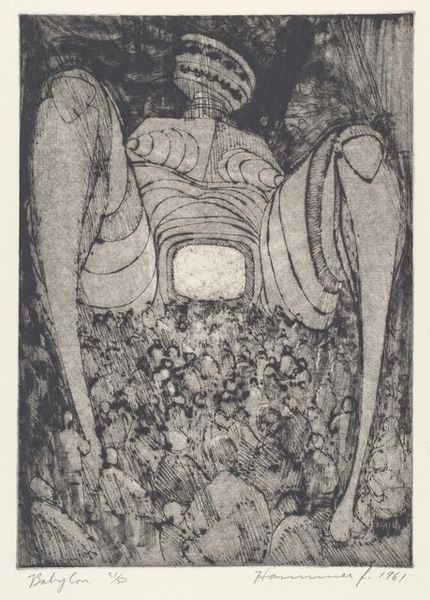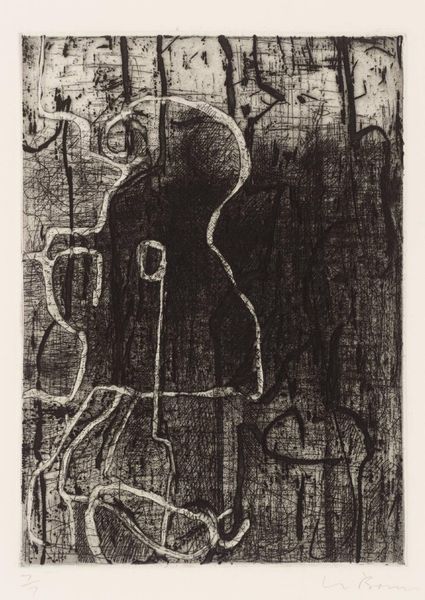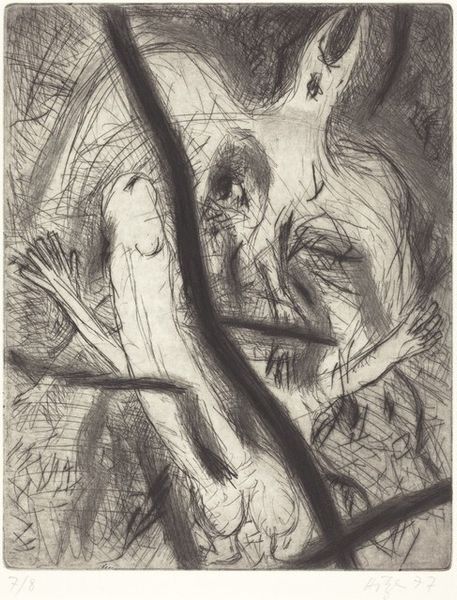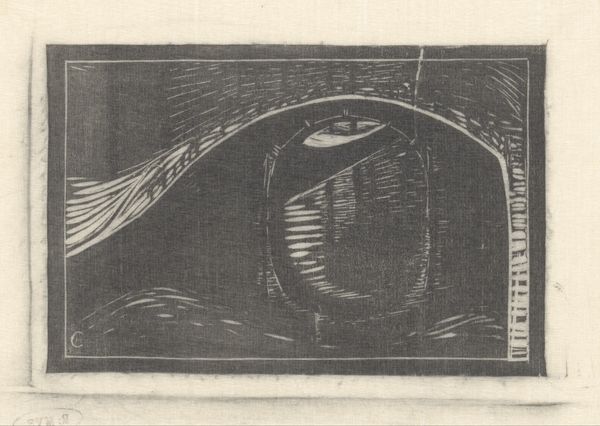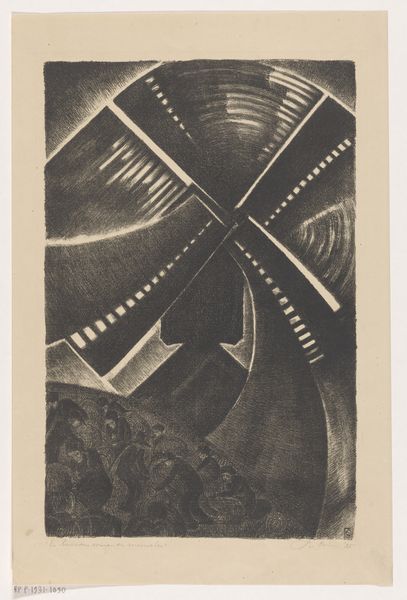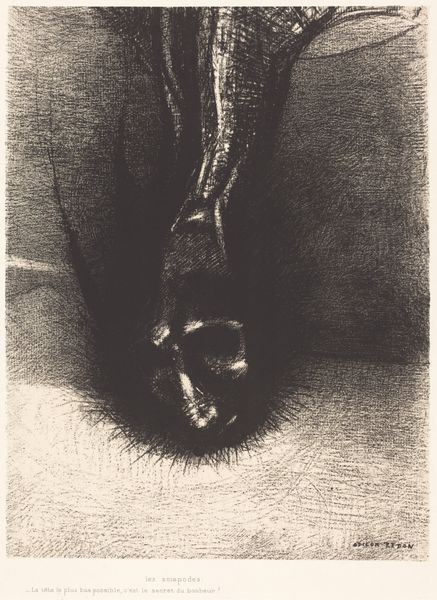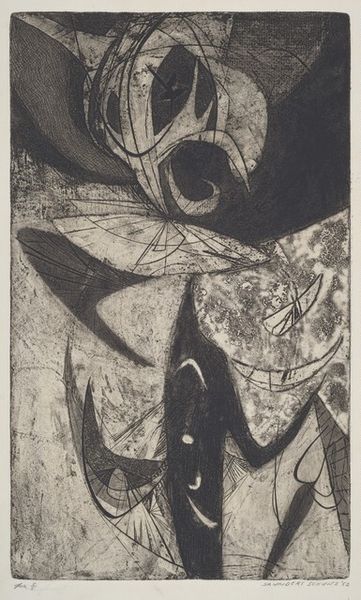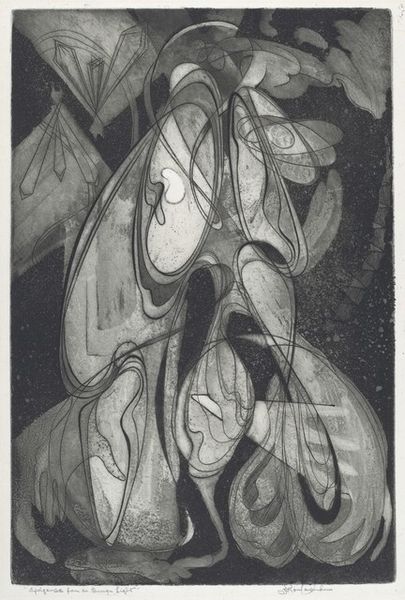
drawing, lithograph, print
#
pencil drawn
#
drawing
#
lithograph
# print
#
landscape
#
figuration
#
pencil drawing
#
symbolism
#
history-painting
#
monochrome
Dimensions: sheet: 17 9/16 x 12 7/16 in. (44.6 x 31.6 cm) image: 7 x 7 9/16 in. (17.8 x 19.2 cm)
Copyright: Public Domain
Curator: Let's spend a moment here with Odilon Redon’s 1891 lithograph, "And over there, the Astral Idol, the Apotheosis," currently held at the Metropolitan Museum of Art. Editor: Eerie! It's such a stark and unsettling image. The figure emerging from what looks like a celestial sphere definitely gives off a strange vibe. Curator: Exactly. Looking at the medium of lithography itself is important. The greasy crayon on stone allows for those incredibly rich blacks and subtle tonal gradations. The figure seems born from, or trapped within, the very substance of the stone. Consider the industrial processes required to produce prints like this on a relatively mass scale: it would have offered a new kind of accessibility. Editor: I agree, and context is key here. Symbolism was flourishing at the time, a clear rejection of realism in favor of exploring inner experience. The print medium allows the dissemination of such ideas on an unprecedented level. It almost democratizes the esoteric. How would its viewers react, do you think? Curator: Well, the title gives us a clue: an "astral idol" undergoing "apotheosis," or deification. That points toward spiritual and occult interests prominent among certain artistic circles during this era. Was it viewed as a transgression to represent a deity this way? Editor: Possibly. It certainly challenged conventional religious iconography. But I see it as a very modern assertion of the power of the individual imagination to create meaning. The idol figure is an every-person; not overtly male or female and androgynous in a way which speaks of a wider cultural anxiety and transformation of that period. Curator: I appreciate how your emphasis on the social and institutional influences helps us consider the range of possible contemporary interpretations. For me, I return to the hand of the artist – Redon himself manipulating those lithographic materials to conjure this unsettling vision. That interplay between artistic intention and mass production is fascinating. Editor: It really is. A powerful reminder that art, regardless of the medium, always reflects the complexities of the world around it, and helps us shape culture itself. Curator: Yes, seeing Redon's "Astral Idol" through the lens of production and material history illuminates his practice even more profoundly.
Comments
No comments
Be the first to comment and join the conversation on the ultimate creative platform.
